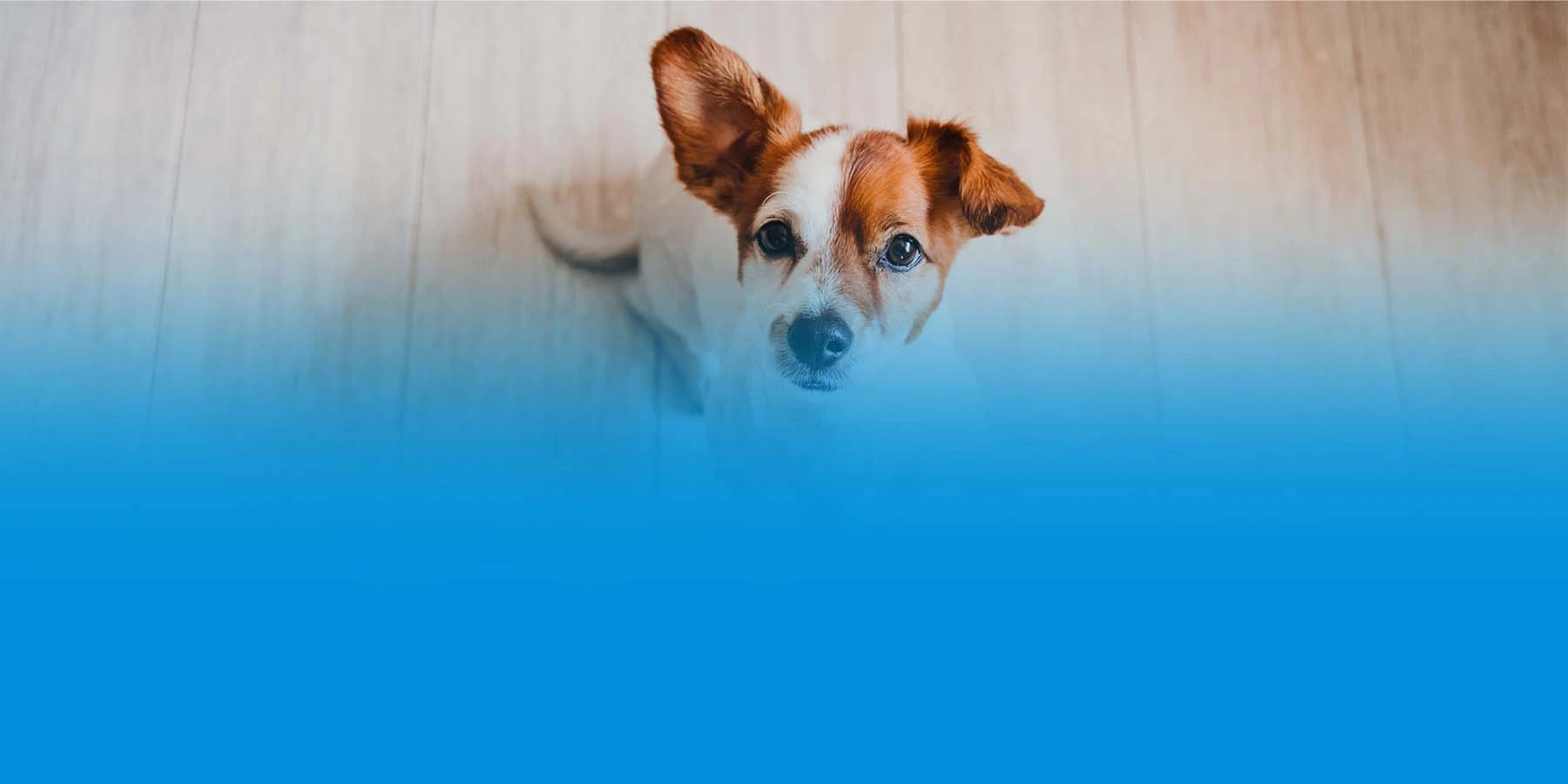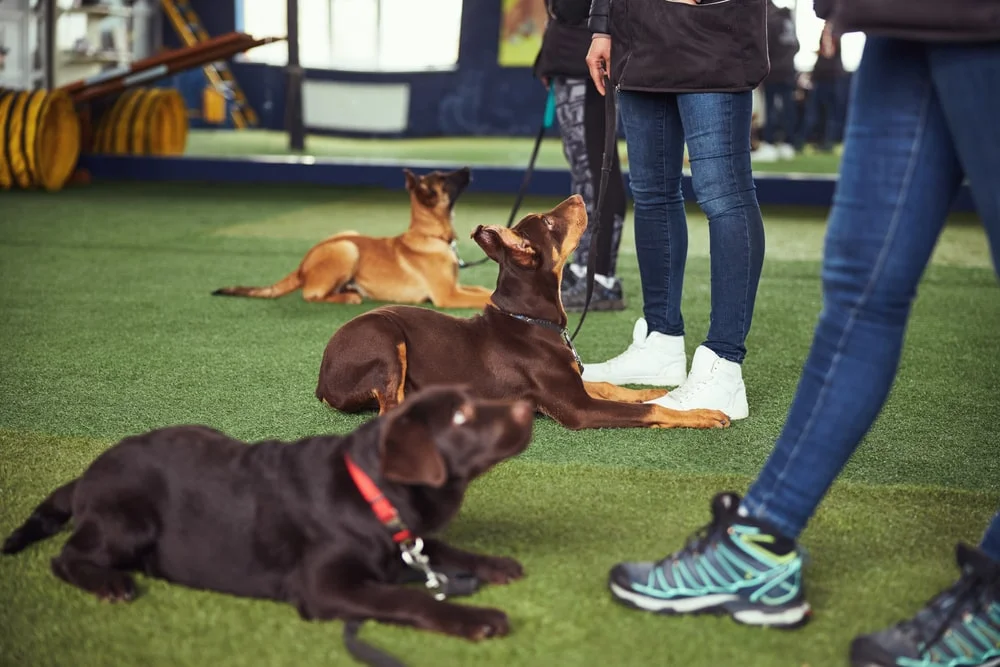PET BEHAVIOR
One day you’re feeding your fun-loving dog when they suddenly bear their teeth at you and growl. What’s going on?
This behavior is known as food aggression. It’s a scary but normal behavior in dogs that signals to everyone around that the food belongs to your pup.
Nevertheless, this behavior isn’t desirable because it often escalates to your dog biting hands or even starting fights with other dogs. Fortunately, controlling aggression is possible through dog training and learning your dog's triggers, which can bring both you and your dog some relief.
What Is Food Aggression?
Food aggression is a form of resource guarding.³ This looks like a dog growling at the family cat during meal times or staring you down when munching on a bully stick. Resource guarding is normal behavior that our dogs inherited from their wolf cousins; it's a sort of pack behavior that communicates who gets to eat a kill first and who doesn’t. In our modern homes, resource guarding and other common behavior issues can lead to tense situations.
The intensity of sudden food aggression in dogs depends on a number of factors, including your dog’s breed and their history. For example, if your pup came from a shelter or was rescued from a potentially dangerous environment, their food aggression may be fear-based.
Nonetheless, it’s important to recognize food aggression when you see it so you can help your dog overcome it.
Recognizing food aggression
Food aggression and resource guarding isn’t just limited to meal times; it may be centered around their favorite treats and toys, or targeted at their siblings as a sign of littermate syndrome. Oftentimes, the growling and snapping (a no-contact bite) take a long time to present themselves. Here are some of the early at their siblings as a sign of littermate syndrome signs of resource guarding in dogs owners often overlook:³,⁴
- Staring or side-eyeing
- Seeing the white in their eyes
- Tense posture
- Raised hackles
- A lowered tail
- Hiding objects
If you notice these behaviors, it’s critical that you figure out what or who the aggression is targeted toward. Some dogs begin showing signs of food aggression after a change in their environment or when a new pet is introduced to the home. Once you figure out what’s causing their aggression, you can make a game plan to stop the behavior in its tracks. If you notice these behaviors, but can’t seem to find the root of the problem, consult your veterinarian to rule out potential underlying health concerns.
Three Ways To Fix Food Aggression
Fixing food aggression won’t happen overnight, and it’s important to know that punishing your dog won't solve the problem. Reacting to their growling may make the matter worse. Remember that a negative reaction is still a reaction — patience is key when helping your dog overcome food aggression.
Focus on creating a safe environment for your dog that lets them know they don’t need to be afraid. Here are some of the most critical things you can do to address their food aggression.
Training
Dog training is a must when addressing food aggression because the root of the behavior comes from their genetics. Dogs are pack animals who are hardwired to follow a leader. As much as we love to spoil our furry companions, we have to discipline them, too!
To begin preparing for their training, figure out what motivates your dog so you can reward good behavior.⁵ If they’re displaying food aggression, it’s probably food! Start by hand-feeding your dog their favorite treat or meals to reinforce that hands near their food is a positive thing; then you can introduce commands such as “leave it” or “give it.”⁶
Lastly, consider group dog training classes in your neighborhood. Professional dog trainers will be able to help you manage your dog’s food aggression and bring peace back to your home.
Feed them in a separate room
Another measure you can take is feeding your dog in a separate room. Separating them from family meals may seem harsh, but this will limit any stressors while you train your dog to follow the pack.
Set up an area in the home that’s strictly for their meals and treats so they can finish eating in peace. Keep other pets and small children away from this area while your dog eats. Once you’re confident that your dog is on their best behavior, you can slowly reintroduce them to group eating activities.
Keep the high-value treat out of the house
Maybe your dog has too much of a good thing. For example, after observing your dog's behavior, you determine that your dog mainly guards their bowl of mashed sweet potatoes. Maybe they shouldn’t have sweet potatoes if this is the only food they guard. You must decide what your dog has access to.
A great way to handle this is to trade the treat! Call your dog away from the food, trade the treat for another one — like a piece of fruit or chicken — and then your pup won’t feel cheated.⁴
Let Your Vet Help You Correct Food Aggression
Be sure to talk with your veterinarian about your dog's behavior. Sometimes food aggression may be a sign of underlying health issues, especially in senior dogs experiencing cognitive decline. If this is the case, you may find yourself knee-deep in costly veterinary bills.
Get a free quote to see if dog insurance is a good option for you and your pup.¹ MetLife’s dog insurance policies can cover wellness checks and any prescription medications your pup may need as they overcome behavioral issues.² After all, a healthy dog is the sweetest treat you could ever have.


